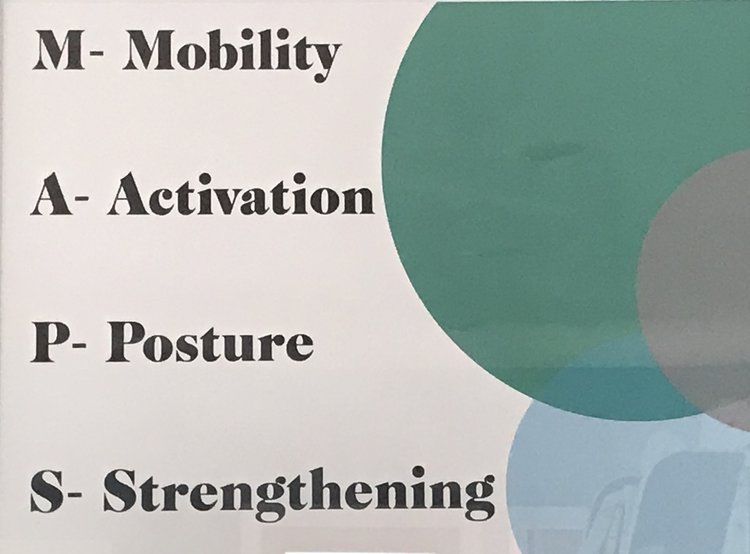
Well, I thought on my first blog post that I should expand on what makes Balanced Body Rehab different than other physical therapy service providers. I would like to say that it’s our recognized excellent customer service, one-on-one care, and genuine caring attitudes towards our clients’ whole body physical health, but many clinics could make the same claims. What sets us apart is pretty simple: it’s our treatment systems. We have fine-tuned a system for treatment that makes some of the most complicated cases that come through our doors seem relatively simple. Many clients come in our office expecting to only be treated for one area of the body because that is what conventional physical therapy clinics usually do. Often, they are very surprised that we will not only be addressing their neck pain but also their shoulder, low back, and knee pain as well. Many clinics may take 15-20 visits to cover chronic pain cases. With our systems, we have been successful treating many of our clients with multiple pain areas in 4-6 sessions.
So what’s the system, already? The system is a 4-step process, and we use an acronym to simplify it further: MAPS: your guide to moving and feeling better.
Mobility
Activation
Posture
Strength
To break it down further:
Mobility: One of the core principles of our treatment philosophy is helping our patients achieve the best possible alignment/posture. However, we can't work on posture until the body moves well enough to be able to freely move into its new position. Likewise, we don't ask our patients to do strength training until their joints and soft tissues have the mobility needed to allow the correct motion for lifting. Decreased mobility leads to compensations in movement and compensations can lead to injury.
Chronically tight tissues won't stretch well until they are self-massaged or released (a term that we use). We use the Taffy Concept to explain this better: You can't stretch taffy until you take it out of the wrapper, just like you can't stretch muscle until you release the connective tissue surrounding it. Our staff performs hands-on manual therapy to the tissues to release connective tissue adhesions or lessen muscle guarding from the nervous system. We then teach the patient how to self-massage and stretch their tissues at home so the tissues won't return back to the prior state.
Activation: We commonly see patients that have been performing weight lifting routines for years including squats and lunges, yet when we test their gluteal muscles (buttocks), they are commonly weak. The reason they are weak is that their brain is not connected to their buttocks! This may sound weird, but muscles turn on when the nerves that supply them provide a stimulus to the muscle. If the nerves from the central nervous system are not trained to turn on the correct muscles, the body will substitute with other muscles which can cause imbalances and potential pain over time.
We teach our patients how to turn their nervous system on to key muscles that aren't firing well. When your muscles are firing well, you are ready to take your body to the next level and start strengthening safely. However, you can't strengthen muscles if your skeleton is not in the proper position which brings us to step 3 in our sequence.
Posture: Poor posture leads to early wear and tear on joints, excessive muscle fatigue and even chronic pain. Despite popular belief, it can be changed. The degree by which it can change depends on factors such as age, body type, and specific conditions, but the majority of people can change how their body is routinely positioned to benefit their health. Routine stretching won't have a long-term effect unless a daily awareness of good posture is maintained to keep the muscles in a balanced, lengthened state. Correct posturing allows a proper contraction-relaxation sequence in the muscular system that allows proper blood circulation and nutrition.
Our team teaches our patients how to sit, stand, walk, and even run with good posture. We discuss postural habits at home or at work, sleep positions, and positional tendencies when driving to name a few. Many of our patients suddenly feel much better when they are made aware of faulty positions that they are holding their bodies in for much of the day. Likewise, they are also amazed by how naturally their "core" muscles turn on when their body is properly aligned.
Strength: Good mobility, activation, and posture sets the body up to be firing on all cylinders and ready to take things to the next level. Adequate strength is essential for everyday function but good strength training can be difficult to do without risk of strain or injury. We teach our patients how to strengthen properly with a focus on proper positioning and mobility. We teach that with all movement, the core (center) muscles should activate/fire first and the extremities second. A strong core that activates quickly is crucial to being able to make full body strength gains without risk of injury. We have a full-body strength assessment that we use to determine what muscle groups are weak and require attention. Your weight training program should be specific and targeted to your weak areas. Only then can you achieve a balanced state.
Well, that's it. The Balanced Body Method and MAPS is what sets us apart. Every patient is different and has their own, specific treatment plan. Most of our patients, though, are taken through the MAPS sequence following a full evaluation and discussion of treatment goals. Number of sessions will vary based on a patient's needs or their condition, but many patients start seeing positive results in 2-3 sessions.
If you feel our treatment system would be of benefit, please call us at (314) 780-9759 for a complimentary phone consultation or reach out to us at info@balancedbodyrehab.com
